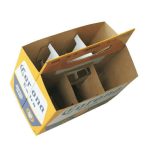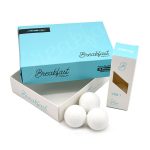In an era dominated by digital innovation and technological marvels, there exists a humble yet revolutionary invention that continues to shape our daily lives – the corrugated paper box. These unassuming containers, with their distinctive wavy layer sandwiched between flat liners, have become the silent workhorses of global commerce, protecting everything from priceless artifacts to everyday essentials. The story of corrugated packaging is one of brilliant simplicity meeting practical necessity, creating a solution that has stood the test of time while continuously evolving to meet modern demands.
The journey began in 1856 when Englishmen Healey and Allen patented corrugated paper as a lining material for tall hats. Little did they know this invention would eventually transform into one of the most essential packaging materials worldwide. The true breakthrough came when American Albert Jones discovered its potential for wrapping fragile items like glass bottles, patenting the single-faced corrugated board in 1871. This marked the beginning of a packaging revolution that would eventually see corrugated boxes replace wooden crates as the standard shipping container, fundamentally changing how goods move across the globe.
What makes corrugated boxes truly remarkable is their ingenious structure. The fluted medium trapped between two liners creates air columns that provide exceptional cushioning and strength-to-weight ratio. This clever design allows these boxes to withstand substantial pressure while remaining lightweight and cost-effective. Modern corrugated boxes come in various flute profiles – from A-flute with excellent cushioning properties to B-flute for superior printing surface and E-flute for sleek retail packaging – each designed for specific applications and protection needs.
The environmental advantages of corrugated paper boxes position them as sustainability champions in an increasingly eco-conscious world. Made primarily from renewable resources and boasting recycling rates exceeding 90% in many developed countries, these boxes represent a circular economy success story. The corrugated industry has pioneered closed-loop systems where used boxes become raw material for new ones, significantly reducing waste and environmental impact. Furthermore, advancements in manufacturing have led to reduced water consumption and energy use, making modern corrugated production more environmentally friendly than ever before.
In today’s e-commerce driven world, corrugated boxes have become the face of retail for millions of consumers. The unboxing experience has evolved into a crucial marketing touchpoint, with brands leveraging custom-printed corrugated packaging to create memorable brand interactions. From Amazon’s signature smile boxes to innovative designs that reduce packaging waste while enhancing product protection, corrugated boxes continue to adapt to changing consumer behaviors and expectations. The rise of omnichannel retail has further cemented their importance, serving as the physical link between digital storefronts and customer doorsteps.
Technological innovations continue to push the boundaries of what corrugated packaging can achieve. Smart packaging solutions now integrate QR codes, NFC technology, and augmented reality experiences directly into box designs. Advanced coatings and treatments have expanded their capabilities to include moisture resistance, flame retardancy, and even antimicrobial properties. The development of lightweight yet stronger corrugated materials has helped reduce shipping costs and environmental impact simultaneously, while automated box-making systems have revolutionized production efficiency.
Looking toward the future, corrugated paper boxes are poised to maintain their essential role in global supply chains while embracing new challenges and opportunities. The ongoing development of water-based barrier coatings promises to expand their use in food packaging and other sensitive applications. Innovations in digital printing enable shorter runs and greater customization, while advances in structural design continue to optimize material usage and protective performance. As sustainability concerns grow, we can expect to see increased use of recycled content and the development of even more efficient recycling processes.
From protecting delicate electronics during international shipping to serving as temporary furniture during college moves, corrugated boxes have woven themselves into the fabric of modern life. Their versatility, sustainability, and continuous innovation ensure they will remain indispensable in our increasingly connected world. The next time you receive a package or stock shelves at your local store, take a moment to appreciate the engineering marvel in your hands – the humble corrugated paper box, truly one of history’s most impactful and enduring inventions.




Leave a Message